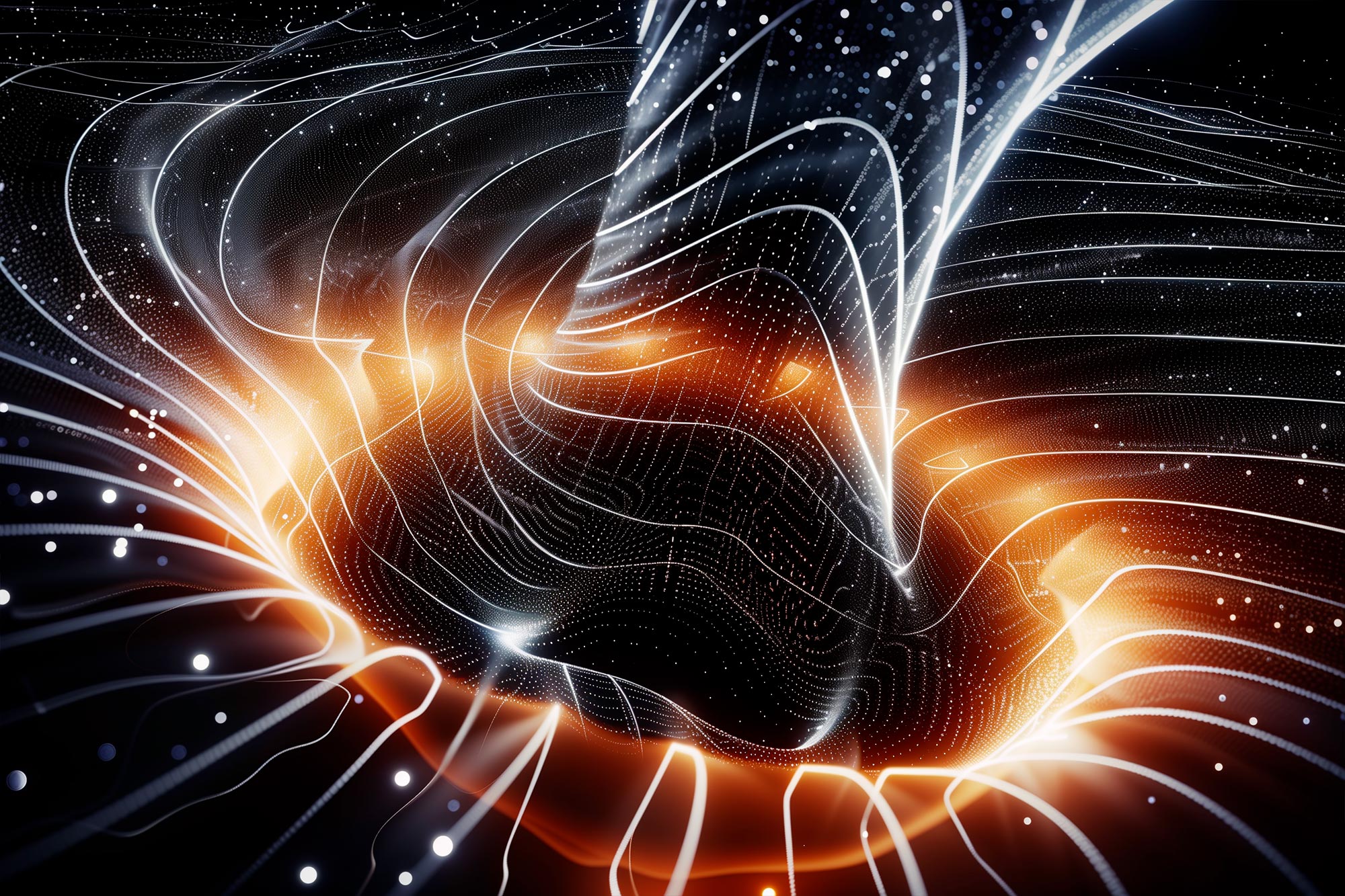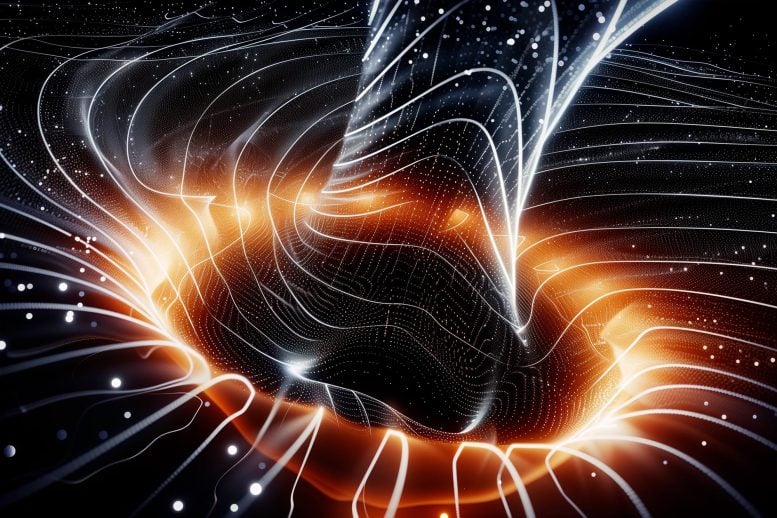

Gas swirling around black holes forms disks that are among the most effective energy converters in the universe, emitting light and jets of plasma. Recent simulations have shown that as black holes spin, these disks can wobble, changing the direction of what they emit.
This movement could explain why the light from some of these disks varies over time, shedding light on a previously mysterious aspect of how black holes influence their surroundings.
Gas swirls around a black hole (BH) due to its intense gravity, forming an accretion disk. These accretion disks are among the most efficient energy conversion mechanisms in the universe, emitting light and plasma jets. When a BH spins on its axis, the accretion disk wobbles like a spinning top. This precessional motion has been studied in less luminous accretion disks, but whether it also occurs in ultraluminous accretion disks, which emit strong radiation, remains uncertain.
Researchers at the University of Tsukuba conducted a large-scale radiation electromagnetic hydrodynamics simulation based on general relativity and demonstrated for the first time that the precessional motion of a tilted ultraluminous accretion disk is caused by the spin of the BH. Moreover, this precessional motion periodically alters the direction of the jets and radiation emitted from the BH, suggesting that the periodic fluctuations in luminosity of ultraluminous accretion disks are likely driven by the spin of the BH. Previously, the cause of these periodic fluctuations was unknown.
In the future, the researchers intend to validate whether BHs are spinning by comparative analyses between extended-term simulations and observational data. This pioneering achievement is poised to deepen our understanding of how the spin of a BH influences cosmic phenomena, and make a substantial contribution to the authentication of the spacetime framework of BHs and general relativity.
Reference: “General Relativistic Radiation Magnetohydrodynamics Simulations of Precessing Tilted Super-Eddington Disks” by Yuta Asahina and Ken Ohsuga, 17 September 2024, The Astrophysical Journal.
DOI: 10.3847/1538-4357/ad6cd9
This work was supported by JSPS KAKENHI Grant Numbers 23K03445(Y.A.), 21H01132(R.T.), 21H04488, 18K03710(K.O.). This work was also supported by MEXT as “Program for Promoting Researches on the Supercomputer Fugaku” (Structure and Evolution of the Universe Unraveled by Fusion of Simulation and AI; Grant Number JPMXP1020230406) and used computational resources of supercomputer Fugaku (RIKEN Center for Computational Science, Project ID: hp230204, hp230116), ATERUI II (National Astronomical Observatory of Japan), Oakforest-PACS (the University of Tokyo, University of Tsukuba), and Wisteria/BDEC-01 Odyssey (the University of Tokyo).